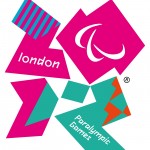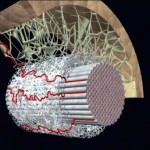…It can be such a pain in the bum… literally! ‘Sciatica’ is the term used to describe any pain that is originating from irritation of the Sciatic Nerve. This pain can be felt anywhere down a leg, from the bottom to the feet.
The Sciatic Nerve is the longest and thickest nerve in the human body, running from your lower back all the way in to your foot, with its thickest part being around 2cm in width! As you can imagine, a lot can happen to that nerve along its route and exactly what can happen is the subject of this post. The Sciatic Nerve originates as individual spinal nerves known as L4,L5,S1,S2 and S3, these nerves exit the spine individually but then converge to create the Sciatic Nerve. Bear this in mind when we discuss problems that can occur to the Sciatic nerve that lead to what we all know as ‘Sciatica’.


Disc Bulges
The most common cause of Sciatica is what is known as a Disc Bulge (Click here for a complete description of what a disc bulge is). A disc bulge between the vertebrae of L4 and L5 or between the vertebrae of L5 and S1 can lead to ‘Sciatica’.
A disc bulge essentially only affects the nerve at which level the bulge is occurring, this therefore would affect the path of the Sciatic Nerve but particularly at the points at which the original nerve supplies the body. For example, a backwards and to the side (postero-lateral) Disc Bulge at L5/S1 usually causes pain/tingling/numbness/pins and needles at the sole and outside edge of the foot on the same side as the bulge. This is because the nerve exiting between the spinal segments of L5 and S1 is what is known as the S1 nerve root (like a tree a nerve has a root, another word for where it starts). The S1 nerve supplies both muscles (a Myotome) and skin sensation (a Dermatome). So as you can see the S1 nerve supplies sensation to the sole and outer edge of the foot which is why pain is felt here. This applies to all nerves exiting the spine. If one level has a bulge then the skin it supplies may have a change in sensation. The muscles that each affected nerve innervates may also not work correctly or may even begin to decrease in size and become flaccid, seen in severe cases. For example, The S1 nerve supplies lots of muscles in the lower leg and foot so it would be quite clear if there was something affecting its innervation severely as all these signs would be present. Chiropractors treat disc bulges all the time, worst case scenario is surgery for a disc but your Chiropractor or manual therapist will let you know if this is necessary.
Foraminal Stenosis
The word ‘Foramen’ basically means ‘a hole’, where the L4, L5, S1, S2, S3 nerves leave the spine between each vertebral segment is a hole called the ‘Intervertebral Foramen’. If anything decreases space at this Foramen then Sciatica can occur, problems such as bony spurs, inflammation, a Spondylolisthesis or a Tumor can all cause a decrease in space here and irritate the nerve as it exits. This can therefore be one of the causes that lead to irritation of the Sciatic nerve and the symptoms associated to it.
Piriformis Syndrome
In a nutshell ‘Piriformis Syndrome’ occurs as a result of the Sciatic nerve being irritated by the Piriformis Muscle. Though it’s not always simple to treat for the following reasons:
The Sciatic nerve’s relationship with the Piriformis Muscle in the general population differs from person to person. As you can see, most commonly it passes beneath the Piriformis Muscle, however in the minority of the population the Sciatic Nerve can actually pass through the Piriformis Muscle entirely, or even stay split around it and connect after.

The Piriformis is an external rotator of the the leg, if it gets too tight (common in a lot of people) it can become irritated, this leads to inflammation at the muscle and surrounding tissues, which in some cases includes the Sciatic Nerve. This irritation can cause symptoms down the leg that are often misdiagnosed as disc bulges due to their similar presentation.
If you have further questions or would like to know more about this topic please ring us on 01452309372 or email contact@longlevenschiro.com

![]() .
.











